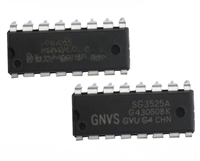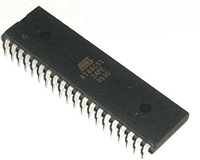AD8361
U6 provides feedback to linearize the inherent tanh transfer
function of the OTAs. When one OTA or the other is fully
selected, the feedback is very effective. The active OTA has zero
differential input; the inactive one has a potentially large
differential input, but this does not matter because the inactive
OTA is not contributing to the output. However, when both
OTAs are active to some extent, and the two signal inputs to the
crossfader are different, it is impossible to have zero differential
inputs on the OTAs. In this event, the crossfader admittedly
generates distortion because of the nonlinear transfer function
of the OTAs. Fortunately, in this application, the distortion is
not very objectionable for two reasons:
V
OUT
MISALIGNMENT INDICATES
MALADJUSTMENT OF R3
TRANSITION
REGION
RF INPUT LEVEL – V rms
Figure 62. Intercept Adjustment
In principle, this method could be extended to three or more
AD8361s in pursuit of even more measurement range. However,
it is very important to pay close attention to the matter of not
excessively overdriving the AD8361s in the weaker signal paths
under strong signal conditions.
1. The mismatch in input levels to the crossfader is never
large enough to evoke very much distortion because the
AD8361s are reasonably well-behaved.
2. The effect of the distortion in this case is merely to distort
the otherwise nearly linear slope of the transition between
the crossfader’s two inputs.
Figure 63 shows the extended range transfer function at multiple
temperatures. The discontinuity at approximately 0.2 V rms arises
as a result of component temperature dependencies. Figure 64
shows the error in dB of the range extender circuit at ambient
temperature. For a 1 dB error margin, the range extender circuit
offers 38 dB of measurement range.
V
OUT
m
≠ m
2
1
DIFFERING
SLOPES INDICATE
MALADJUSTMENT
OF R1
m
2
3.0
REF LINE
m
1
2.5
TRANSITION
REGION
+80°C
2.0
RF INPUT LEVEL – V rms
–30°C
1.5
Figure 61. Slope Adjustment
This circuit has three trimmable potentiometers. The suggested
setup procedure is as follows:
1.0
0.5
0
1. Preset R3 at midrange.
2. Set R2 so that its slider’s voltage is at the middle of the
desired transition zone (about 2.5 V dc is recommended).
0
0.2
0.4
0.6
0.8
1.0
DRIVE LEVEL (V rms)
3. Set R1 so that the transfer function’s slopes are equal on
both sides of the transition zone. This is perhaps best
accomplished by making a plot of the overall transfer
function (using linear voltage scales for both axes) to assess
the match in slope between one side of the transition
region and the other (see Figure 61). Note: it may be
helpful to adjust R3 to remove any large misalignment in
the transfer function in order to correctly perceive slope
differences.
Figure 63. Output vs. Drive Level over Temperature for
a 1 GHz 64 QAM Modulated Signal
5
4
3
2
1
0
–1
4. Finally (re)adjust R3 as required to remove any remaining
misalignment in the transfer function (see Figure 62).
–2
–3
–4
–5
–32
–27 –22
–17
–12
–7
–2
3
8
13
DRIVE LEVEL (dBm)
Figure 64. Error from Linear Reference at 25°C for a
1 GHz 64 QAM Modulated Signal
Rev. C | Page 20 of 24






 SG3525资料手册详解:SG3525参数分析、引脚说明、应用介绍
SG3525资料手册详解:SG3525参数分析、引脚说明、应用介绍

 AT89C51单片机资料手册详细解析及应用示例
AT89C51单片机资料手册详细解析及应用示例

 CP2102资料手册解读:CP2102引脚说明、关键参数分析
CP2102资料手册解读:CP2102引脚说明、关键参数分析

 资料手册解读:UC3842参数和管脚说明
资料手册解读:UC3842参数和管脚说明
